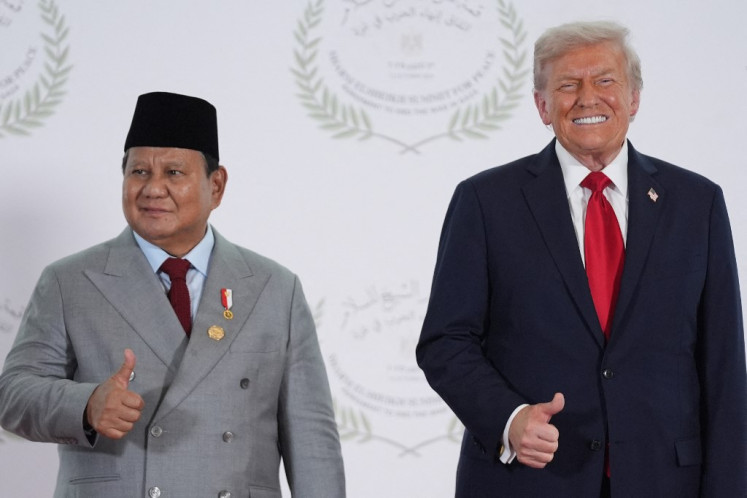Popular Reads
Top Results
Can't find what you're looking for?
View all search resultsPopular Reads
Top Results
Can't find what you're looking for?
View all search resultsBrazil keeps eye on Amazon deforestation with satellites
For three decades, a group of researchers have been monitoring forest clearing, agriculture and land use thanks to satellites orbiting the Earth and beaming images to Brazil's National Institute for Space Research (INPE).
Change text size
Gift Premium Articles
to Anyone
T
he vast Amazon forest may be hard to penetrate, posing a problem for authorities trying to stop illegal logging -- but there are still eyes in the sky keeping track of the destruction.
For three decades, a group of researchers have been monitoring forest clearing, agriculture and land use thanks to satellites orbiting the Earth and beaming images to Brazil's National Institute for Space Research (INPE).
The center is located in Brazil's southeastern city of Sao Jose de Campos, far from the Amazon. But the thousands of satellite images sent to deforestation monitors give a pretty good idea of what’s going on in the forest on a daily basis.
"It's the only project in the world that does monitoring on this scale," program coordinator Claudio Almeida told AFP during a visit to the center, located near the mega-city of Sao Paulo.
"All of the European Union would fit into the Amazon with a bit left over. So monitoring this means you have to be on top of remote sensing technology," he said.
Read also: Eyes in the sky aim to protect Earth's rainforests, resources
Born under dictatorship
The program is the government’s main way of tracking deforestation.
During Brazil's dictatorship, between 1964 and 1985, its military rulers commissioned a satellite study to track the spread of deforestation into the interior.
Amid mounting pressure from environment watchers, the government decided to track vegetation loss continuously from 1988.
At first, a group of 50 specialists went over giant printed maps, marking the brown blocks in the green expanse on transparent paper. Back then, it took two years for a comprehensive study of one year’s deforestation.
These days, they get daily low-resolution images, and can alert environmental police a day after suspicious activity.
"This allows a dynamism, speed in the policing," Almeida said.
He added that it has become common for authorities to catch deforestation gangs in the act, soon after they started felling trees, thanks to satellite surveillance.
It was the INPE that in November warned that deforestation of the Amazon had reached a 10-year-high, at 7,900 square kilometers -- or one million soccer fields -- over the previous year.
"This is worrying because we're well over the target estimate for 2020. The government committed to bringing deforestation down to 3,500 square kilometers by 2020," Almeida said.
Read also: China, France launch satellite to study climate change
Domestic satellite
To boost monitoring capabilities, the INPE is working to launch its own, 100-percent domestically developed satellite, called Amazonia-1.
In the bowels of the space studies center engineers huddle around two satellites taking shape.
One is the Amazonia-1. A black shroud separates it from a bigger cousin: CBERS-4A, built jointly with Chinese scientists.
The $300-million CBERS-4A -- standing for China-Brazil Earth Resources Satellite -- is undergoing tests in the INPE’s cavernous lab ahead of its planned launch next year, following on from previous jointly built satellites.
The Amazonia-1, in comparison, is budgeted at $77 million, and is set to travel to space in 2020.
Almeida stressed that it was "very important for Brazil to master this technology."
But knowing about deforestation is one thing. Stopping it is another matter.
Hopelessly understaffed and under-resourced environmental authorities struggle to effectively police crimes on the ground.
There are also political headwinds growing.
Even as Brazil boosts its hi-tech abilities to watch over the forest, its ultra-conservative president-elect Jair Bolsonaro has signaled he might relax environmental controls in favor of agricultural expansion when he takes power on January 1.











